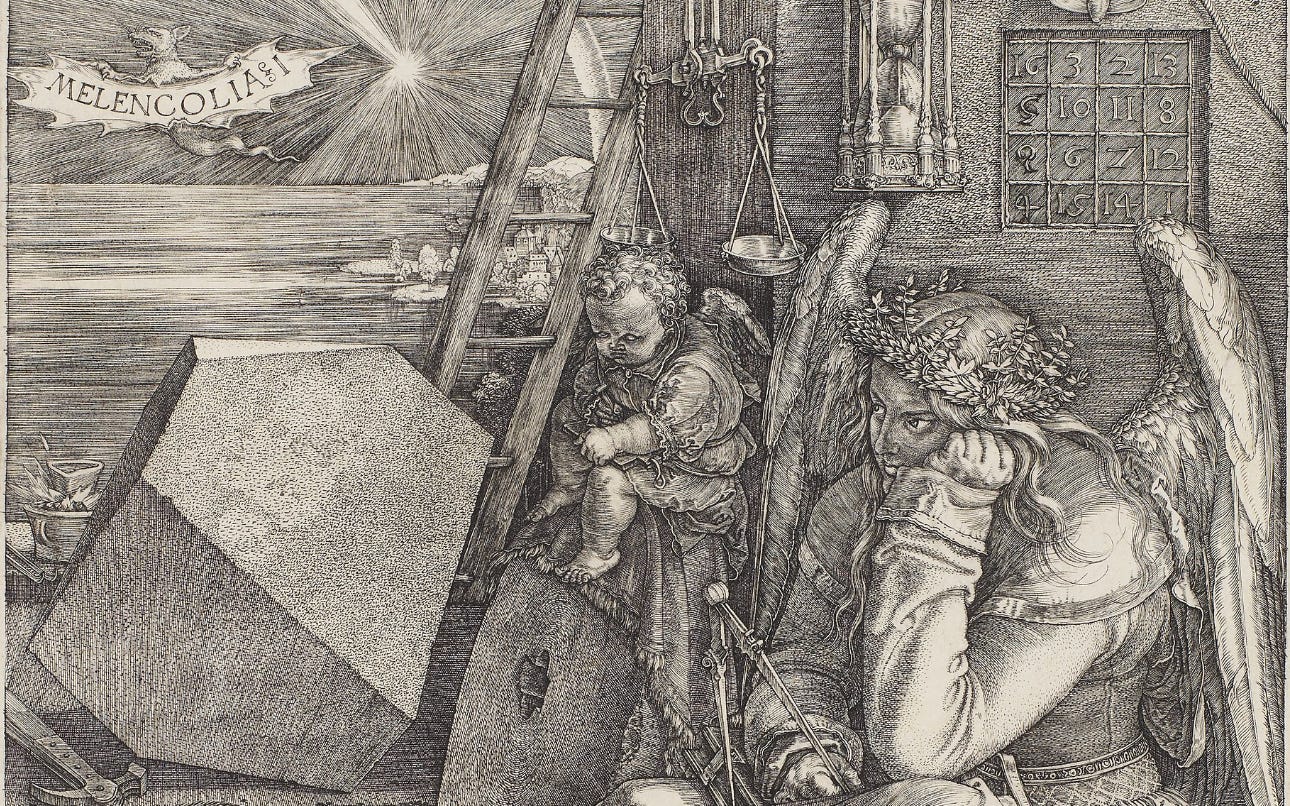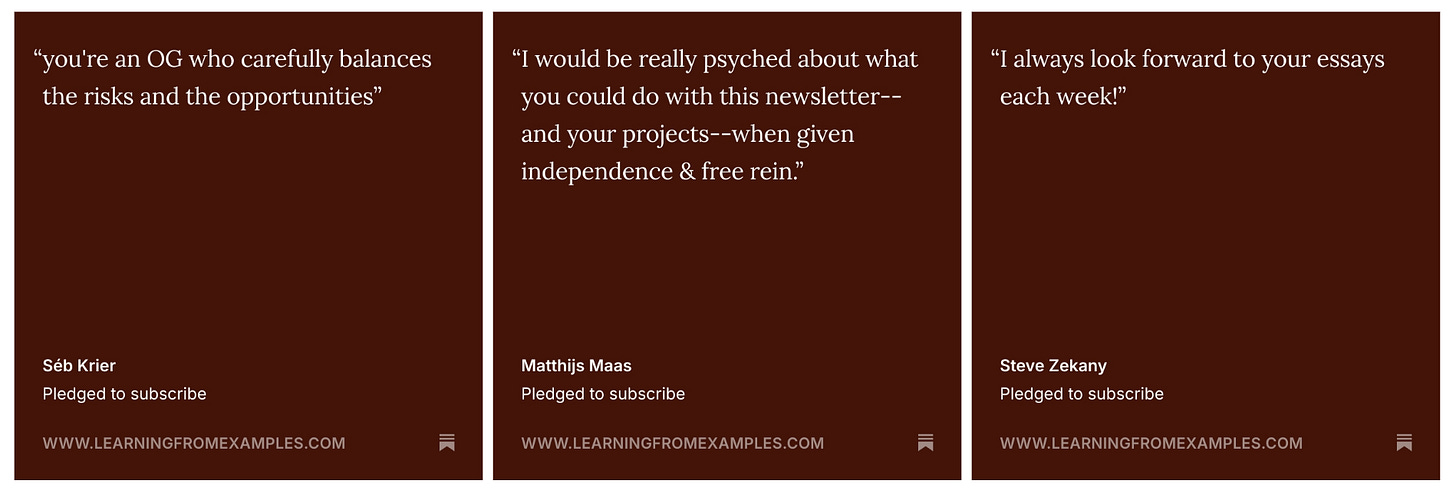Press start: A guide to Learning From Examples
The feature map and the territory
Over the past few weeks, lots of new people have started to read this newsletter. Not thousands, to be sure, but enough to warrant a short note about what I’m doing here.
Basically, I started this project to help myself understand technology’s place in the world. As someone who spent many years gainfully employed by Google DeepMind, I’m primarily (but not exclusively) interested in AI. I want to know where it came from, where it’s going, and what levers we have to make sense of a technology over which so much ink is spilled.
Speaking for myself, I’ve found it helps to go way back. Back to the Cold War, back to the Victorians, and back to the Desert Fathers of Roman Egypt. Sometimes it’s hard to describe Learning From Examples, but I generally say I’m writing about the history of knowledge.
I think that every time we’ve tried to understand the world we find out a little more about ourselves. Sometimes that happens through metaphor: how a model of the brain stands in for social structures, or how an algorithm reflects theories of mind.
Sometimes it happens through unexpected connections, like how early modern alchemy became a crutch for thinking about thinking machines. And sometimes it’s via unintended consequences, the making and breaking of these models and what they mean for us today.
To do that, I write two kinds of posts. These are either:
An essay exploring questions about science, society, and selfhood. Anything from the cultural heritage of AI art to how fiction shapes public policy.
An entry in the AI Histories series where I look at a person, trend or idea in the history of AI or the fields that have influenced it.
If you want to know where to start, I’ve pulled together a few pieces below.
Essays
🔸 The Economy of Magic: A history of AI as alchemy. Once a put-down and now a compliment, this essay traces how the analogy evolved, where it holds, and where it falters.
🔸 The Slop Must Flow: A defence of creative abundance in the age of AI. It argues that what we call slop is the unfortunate byproduct of widening the means of artistic production.
🔸 Reflections on AGI from 1879: Short piece about AI in the Victorian imagination. Looks at George Eliot’s thoughts about the cultural and economic effects of intelligent machines.
🔸 Model Collapse as Social Pathology: An essay about when models (cosmological, theological, artistic, or algorithmic) stop describing the world and start feeding on themselves.
🔸 The Fly and the Filter: A cultural history of attention from the mystics to machine learning. This essay argues every act of focus is also an act of omission, one that we perform to make sense of the world.
AI Histories
Each week I publish a short blog on the ideas, people, and moments that shaped AI before it had a name. I’m planning to write around 50 of these in the next year.
🔹 #1 The Neuron Doctrine: How Ramón y Cajal's 19th-century sketches helped shape the foundations of artificial neural networks.
🔹 #2 Emergence Machines: The origins of genetic algorithms in biology, and how they embodied a philosophy of emergence.
🔹 #3 The Great Hopfield Network Debate: A look at the controversy surrounding claims about the introduction of one of AI’s most important systems.
From Pledge Corner
Finally, some kind words from people who have pledged to support Learning From Examples so far. I’m hopeful that there’s a path to making this newsletter my full-time work in the future. Pledges are a small but important step in that direction, and your support means a huge amount to me as I work towards writing more on Substack.
Thanks for reading, and for making this possible.




Good points 👌. Can i translate one of your articles into Spanish with links to you and a description of your newsletter?